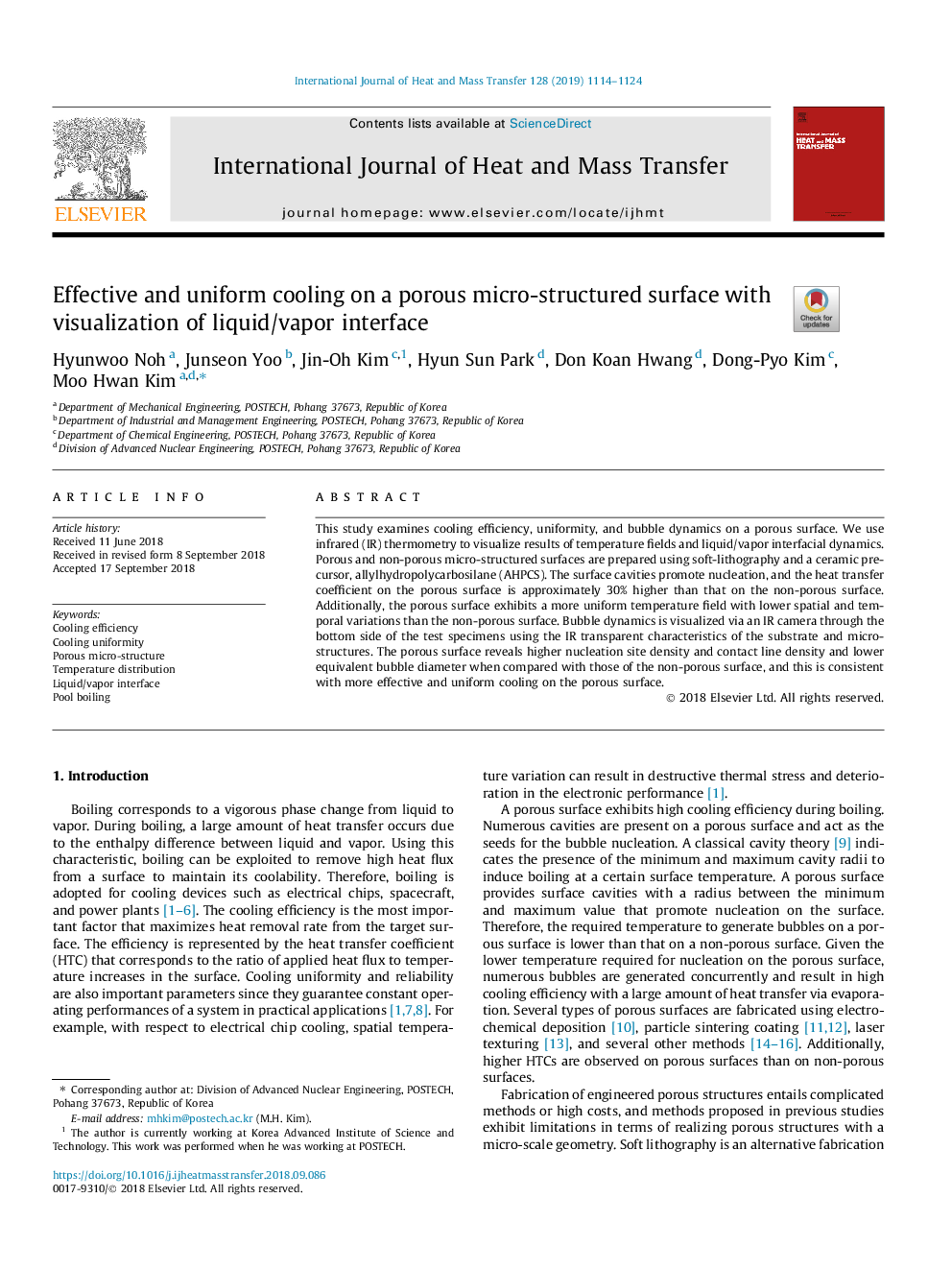| Article ID | Journal | Published Year | Pages | File Type |
|---|---|---|---|---|
| 11031502 | International Journal of Heat and Mass Transfer | 2019 | 11 Pages |
Abstract
This study examines cooling efficiency, uniformity, and bubble dynamics on a porous surface. We use infrared (IR) thermometry to visualize results of temperature fields and liquid/vapor interfacial dynamics. Porous and non-porous micro-structured surfaces are prepared using soft-lithography and a ceramic precursor, allylhydropolycarbosilane (AHPCS). The surface cavities promote nucleation, and the heat transfer coefficient on the porous surface is approximately 30% higher than that on the non-porous surface. Additionally, the porous surface exhibits a more uniform temperature field with lower spatial and temporal variations than the non-porous surface. Bubble dynamics is visualized via an IR camera through the bottom side of the test specimens using the IR transparent characteristics of the substrate and micro-structures. The porous surface reveals higher nucleation site density and contact line density and lower equivalent bubble diameter when compared with those of the non-porous surface, and this is consistent with more effective and uniform cooling on the porous surface.
Related Topics
Physical Sciences and Engineering
Chemical Engineering
Fluid Flow and Transfer Processes
Authors
Hyunwoo Noh, Junseon Yoo, Jin-Oh Kim, Hyun Sun Park, Don Koan Hwang, Dong-Pyo Kim, Moo Hwan Kim,
